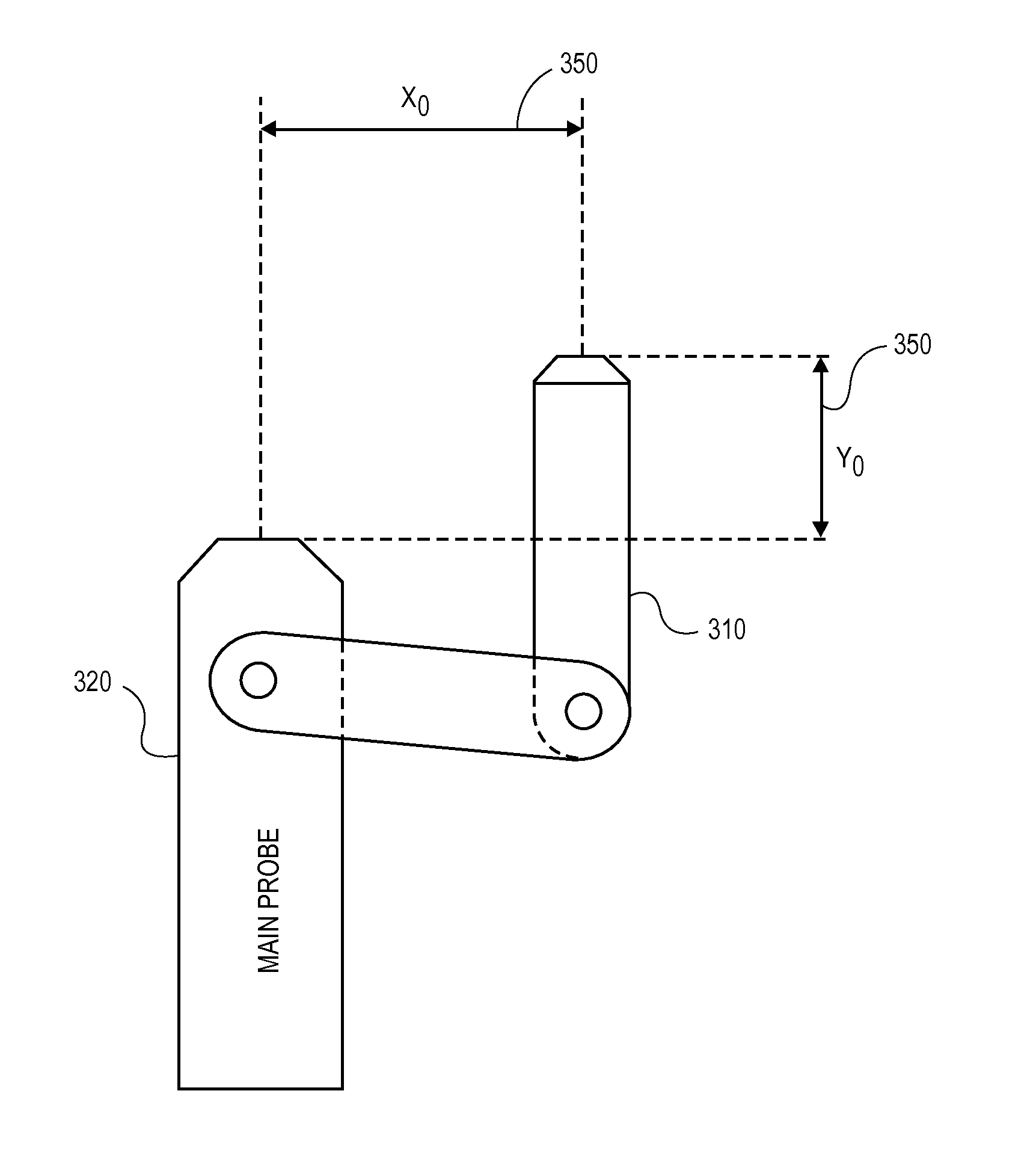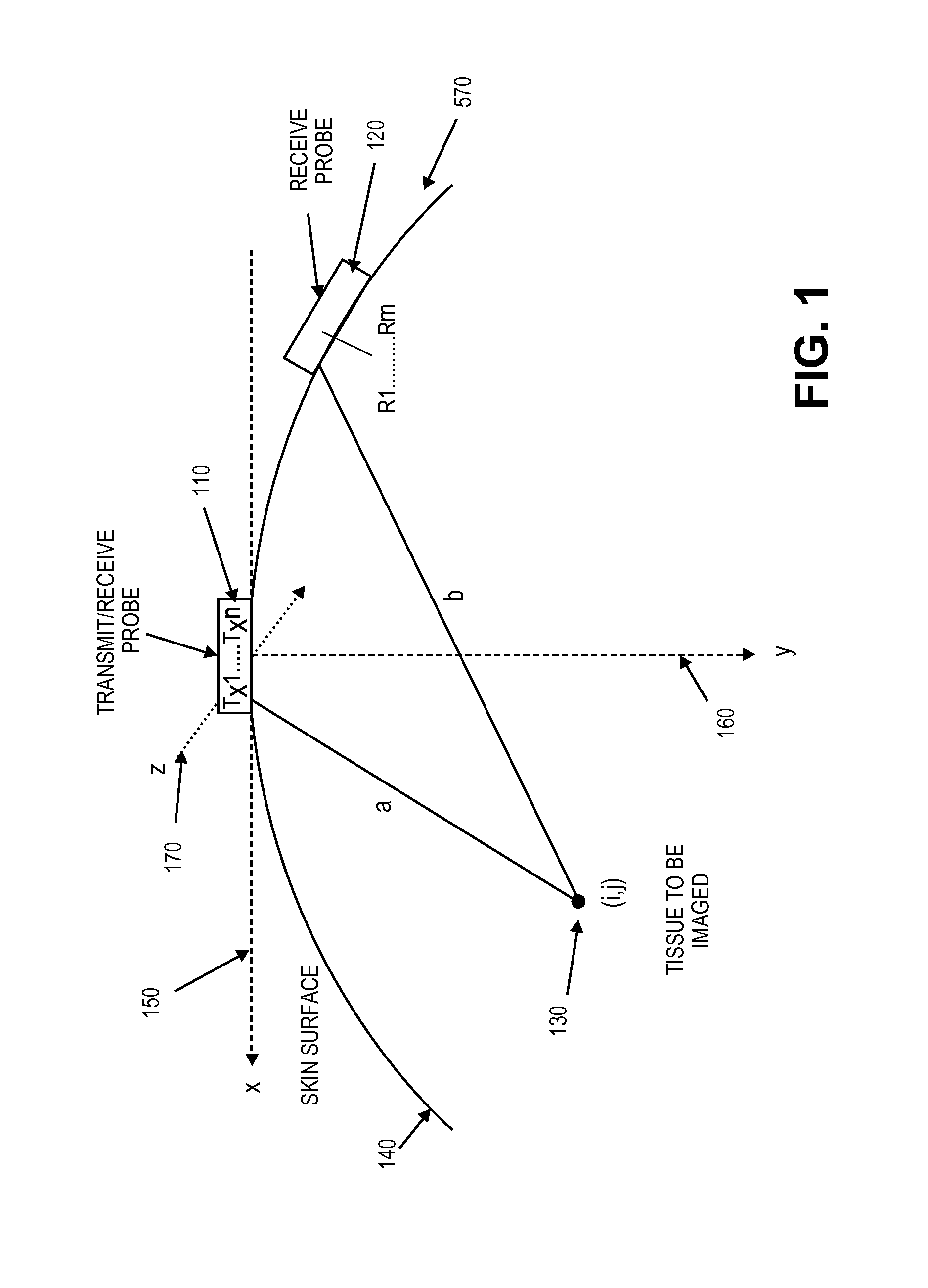Universal multiple aperture medical ultrasound probe
a multi-aperture, medical ultrasound technology, applied in the field of imaging techniques used in medicine, can solve the problems of poor lateral resolution, large lateral resolution, and small apertures
- Summary
- Abstract
- Description
- Claims
- Application Information
AI Technical Summary
Benefits of technology
Problems solved by technology
Method used
Image
Examples
Embodiment Construction
[0068]A Multiple Aperture Ultrasound Imaging (MAUI) Probe or Transducer can vary by medical application. That is, a general radiology probe can contain multiple transducers that maintain separate physical points of contact with the patient's skin, allowing multiple physical apertures. A cardiac probe may contain as few as two transmitters and receivers where the probe fits simultaneously between two or more intercostal spaces. An intracavity version of the probe, will space transmit and receive transducers along the length of the wand, while an intravenous version will allow transducers to be located on the distal length the catheter and separated by mere millimeters. In all cases, operation of multiple aperture ultrasound transducers can be greatly enhanced if they are constructed so that the elements of the arrays are aligned within a particular scan plane.
[0069]One aspect of the invention solves the problem of constructing a multiple aperture probe that functionally houses multip...
PUM
 Login to View More
Login to View More Abstract
Description
Claims
Application Information
 Login to View More
Login to View More - R&D
- Intellectual Property
- Life Sciences
- Materials
- Tech Scout
- Unparalleled Data Quality
- Higher Quality Content
- 60% Fewer Hallucinations
Browse by: Latest US Patents, China's latest patents, Technical Efficacy Thesaurus, Application Domain, Technology Topic, Popular Technical Reports.
© 2025 PatSnap. All rights reserved.Legal|Privacy policy|Modern Slavery Act Transparency Statement|Sitemap|About US| Contact US: help@patsnap.com



